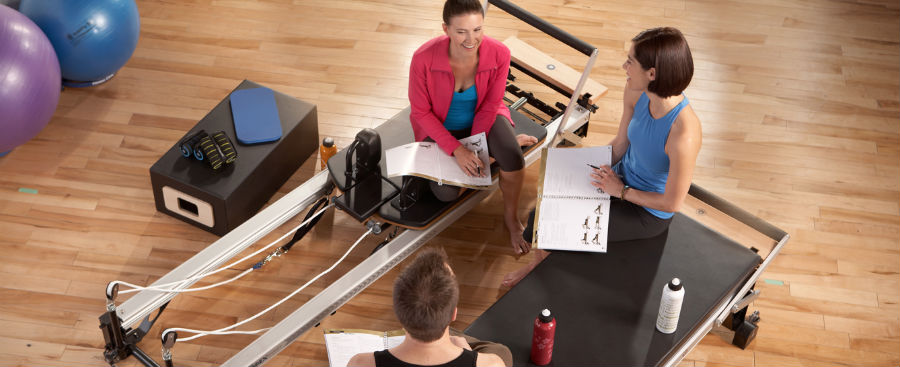 By Beth Gibbs-Bartel, Special AFS Contributor
By Beth Gibbs-Bartel, Special AFS Contributor
Setting the right price for fitness services is important to anyone in the business, from studio owners to independent fitness professionals. Curating a price list of services can be a delicate balancing act between what your services are worth, where they are being offered, and what is being offered by your competitors. Below are a few tips to consider when crafting a price list for fitness services.
Know your Client Base
Are your fitness services geared towards clients looking to improve athletic performance? Weekend warriors? Group classes? One-on-one sessions? The active aging population? Once you’ve decided who your main client base is, find out how often they use your services. Do they come daily? Once a week for a group class? Three times a week for a semi-private? Knowing how often your ideal client will utilize your services can help you establish appropriate prices for a broad range of payment options, including single classes and weekly, monthly or yearly class passes. The better you know your client, the better you’ll be able to tailor pricing to specifically target this demographic.
Know your Profit Margin
It’s important to keep your profit margin in mind when creating a price list for services. Take stock of your overhead costs and the behavior of your client base. Break down the numbers so that you know how much it costs per client to keep your business running, and use this as a guide in setting your prices.
Research your Area
When deciding your price list, do some reconnaissance work in the surrounding neighborhood. What are others charging for similar services? How much of a price increase is there for experience or additional education and training? Prices for fitness services can vary widely depending on the place. What a small studio in Manhattan charges for personal training or group classes will be very different than what a larger studio in Park City Utah charges. If you are the only fitness space in town, research average incomes of the people in the neighborhood and use that ballpark figure on which to base your price list.
Studies have shown that people believe products that are more expensive are inherently of better quality than the cheaper options available, even if the products are exactly the same.
Understand the Psychology of Numbers
Setting price points seems like a straightforward process, but there is a psychology involved in pricing that can work to your benefit if used properly. For example, to the average client, a $995 package appears to be a much better deal than a $1,015 package, even though the actual price difference is only $20. Consider setting prices for packages, yearly memberships and other products a few dollars less than the next big number to encourage clients that they are getting good value.
Realize the Importance of Perceived Value
Studies have shown that people believe products that are more expensive are inherently of better quality than the cheaper options available, even if the products are exactly the same. Though it may be tempting to try and draw in business with discount prices, this may work against your business when it comes to how clients perceive the quality of your space and of your services. Nobody wants to be known as the cheapest place in town.
Create an Effective Membership Strategy
The price of a single session is generally what clients see as the value of your services. When establishing a strategy for memberships, remember that perceived value is important. Create a membership pricing strategy that doesn’t devalue the cost of a single session too steeply. Aim for roughly a 10% discount, based on the average number of visits per week or month, per client. The chart below shows a few simple options for membership pricing based on client visits. The same model can work for determining class passes, weekly and yearly memberships.

*The monthly membership should be based on the average number of times the client base comes per month. For example, if the average is one a week, the monthly membership should include four classes per month.
Creating a price list that reflects the value of your services while catering to the needs of the client can be challenging, but it’s a challenge worth meeting. Effective pricing can help grow your business exponentially. Revisit your pricing each year when you review the behavior of your client base and tweak as necessary.
Beth Gibbs-Bartel is the Vice President, Commercial & Retail Sales at Merrithew™
Beth Gibbs-Bartel plays a leadership role in overseeing Merrithew’s domestic and international sales growth of commercial equipment and studio and retail accessories. On the Commercial side, this is achieved through a network of international Commercial Distributor Partners and Re-sellers as well as a Business Development team that handles direct Commercial sales opportunities globally. On the Retail side, the company sells to a number of international Retail partners and on the company’s own e-commerce channel, www.merrithew.com/shop. Beth was a Senior Vice-President with KOCH Entertainment Inc. prior to joining Merrithew in 2004. KOCH Entertainment was the largest independent distributor of music and videos in Canada where she was responsible for overseeing sales and marketing for KOCH Vision, the company’s video division. Beth is a graduate of Wilfrid Laurier University with an Honours Bachelor of Arts in Political Science and French. She also has a Certificate in International Conversational French.


Join the Conversation!